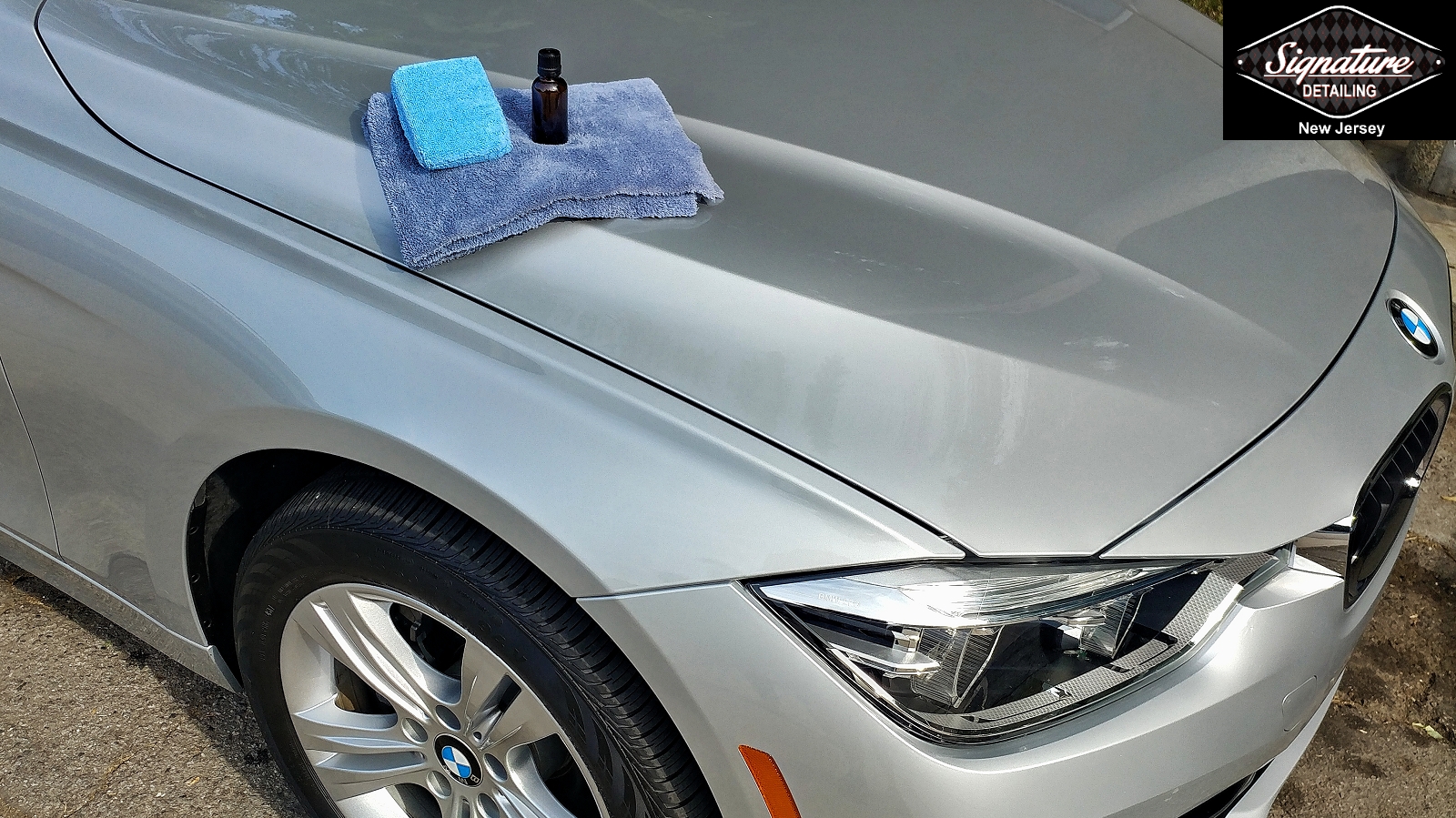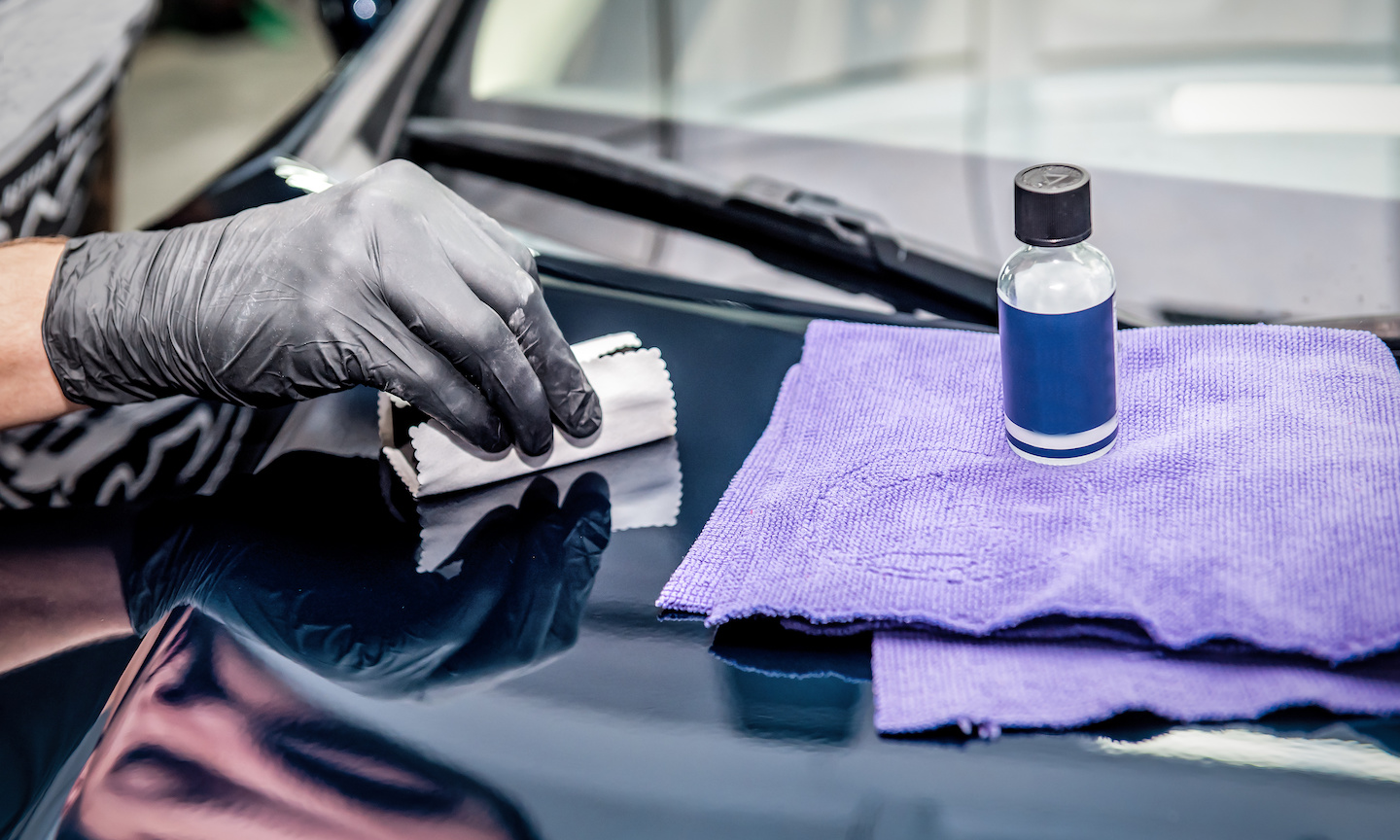Just How Describing Porcelain Covering Enhances the Long Life of Your Cars and truck's Paint
Ceramic finishing has arised as a crucial modern technology in automobile detailing, using a resilient remedy for protecting the integrity of your cars and truck's paint. Understanding the intricacies of just how ceramic coating works and its advantages over standard wax can supply valuable insights for automobile proprietors.
What Is Ceramic Coating?
Comprehending the safety benefits of ceramic layer starts with recognizing its structure and functionality. Ceramic covering is a fluid polymer used to the external surface areas of lorries, primarily made to improve and secure auto paint (Conforti Auto and Marine Detailing Ceramic Coating).
The layer's application involves precise preparation of the vehicle's surface, which must be without contaminants, scrapes, and blemishes to ensure optimal attachment. As soon as applied, the ceramic coating remedies to create a stiff shield that can stand up to different ecological variables, including UV rays, chemical stains, and oxidation.
Moreover, ceramic coverings are not simply surface-level treatments; they permeate the paint to supply an enduring defense. This functionality extends the lifespan of the automobile's aesthetics while preserving its worth with time. Understanding these essential aspects of ceramic finishing is essential for cars and truck proprietors seeking effective services for paint conservation and improvement.
Advantages of Ceramic Layer
The advantages of ceramic finish prolong far past its standard protective attributes - Conforti Auto and Marine Detailing Ceramic Coating. Among the most substantial advantages is its capability to supply remarkable sturdiness. Unlike conventional wax or sealants, ceramic coatings produce a solid bond with the cars and truck's paint, permitting it to hold up against ecological threats such as UV rays, acid rain, and road salt. This resilience dramatically reduces the danger of paint damages, protecting the lorry's aesthetic appeal.
Additionally, ceramic coatings use hydrophobic homes, implying they push back water and pollutants. This particular not just makes the vehicle easier to tidy but likewise decreases the frequency of washing, saving both time and effort for auto owners. The glossy surface area developed by the covering stops dust and gunk from sticking, improving the cars and truck's overall cleanliness.
In addition, ceramic coverings boost the depth and clarity of the paint, offering automobiles a glossy coating that is aesthetically striking. This visual enhancement further contributes to preserving the automobile's resale value, as a well-maintained exterior is a significant selling factor for potential purchasers. On the whole, the benefits of ceramic finish make it a worthwhile financial investment for any person aiming to protect and improve their automobile's paintwork.
How Ceramic Coating Works

The covering's hydrophobic residential or commercial properties push back water and dirt, avoiding the build-up of gunk on the surface area. This not just makes the vehicle much easier to tidy but likewise minimizes the likelihood of scratches and swirl marks triggered by conventional cleaning techniques. The ceramic layer acts as a guard versus UV rays, which can cause fading and oxidation over time.
When healed, the layer exhibits impressive resistance to chemicals, consisting of road salts, bird droppings, and tree my website sap, which can or else damage the paint. The longevity of ceramic coatings can last for a number of years, relying on elements such as upkeep and environmental conditions. In general, the chemical bonding procedure of ceramic coverings provides a robust defense that keeps the stability and look of a car's paintwork.
Comparing Ceramic Coating to Wax
Contrasting ceramic finish to traditional wax exposes considerable differences in performance and longevity. While both products intend to shield a vehicle's paint, their structures and sturdiness set them apart. Wax, typically made from natural carnauba or synthetic materials, offers a momentary shield that normally lasts just a couple of weeks to a couple of months, relying on ecological problems and maintenance routines.
On the other hand, ceramic finishes are advanced remedies composed of inorganic products that bond chemically with the automobile's paint. This develops a robust, semi-permanent layer of protection that can endure for numerous years. Therefore, ceramic coverings offer premium resistance to UV rays, chemical discolorations, and physical abrasion, significantly reducing the risk of oxidation and fading.
Furthermore, the hydrophobic buildings of ceramic coatings make sure that water beads up and rolls off the surface area, making it a lot more challenging for dust and grime to adhere. This convenience of cleaning is a basics notable advantage over wax, which can attract dirt and require frequent reapplication. Eventually, for auto owners seeking durable security and enhanced aesthetic charm, ceramic finishings provide a more effective alternative to conventional wax items.
Upkeep Tips for Longevity
Proper upkeep is vital for taking full advantage of the longevity of a ceramic covering. Regular cleansing is the structure of efficient upkeep. Use a pH-balanced cars and truck shampoo to stop deteriorating the covering, and stay clear of automatic auto washes with extreme brushes that can trigger micro-scratches. Instead, choose for a touchless vehicle clean or hand clean.
To preserve the hydrophobic residential or commercial properties of the ceramic covering, consider using an upkeep spray or booster especially created for ceramic finishings every couple of months. This will enhance the safety layer and boost water beading.
In addition, stay clear of subjecting the covered surface area to extreme ecological problems whenever feasible. Vehicle parking in shaded locations or using a cars and truck cover can avoid UV damage and contamination from bird droppings, tree sap, or commercial results.
Lastly, evaluate the finish occasionally for indicators of wear or damages. If you see a reduction in hydrophobic behavior, it may be time for a professional reapplication. By adhering to these upkeep suggestions, automobile proprietors can substantially expand the life and efficiency of their ceramic finishing, making certain that their vehicle's paint continues to be safeguarded and visually appealing for many years to find.
Conclusion
